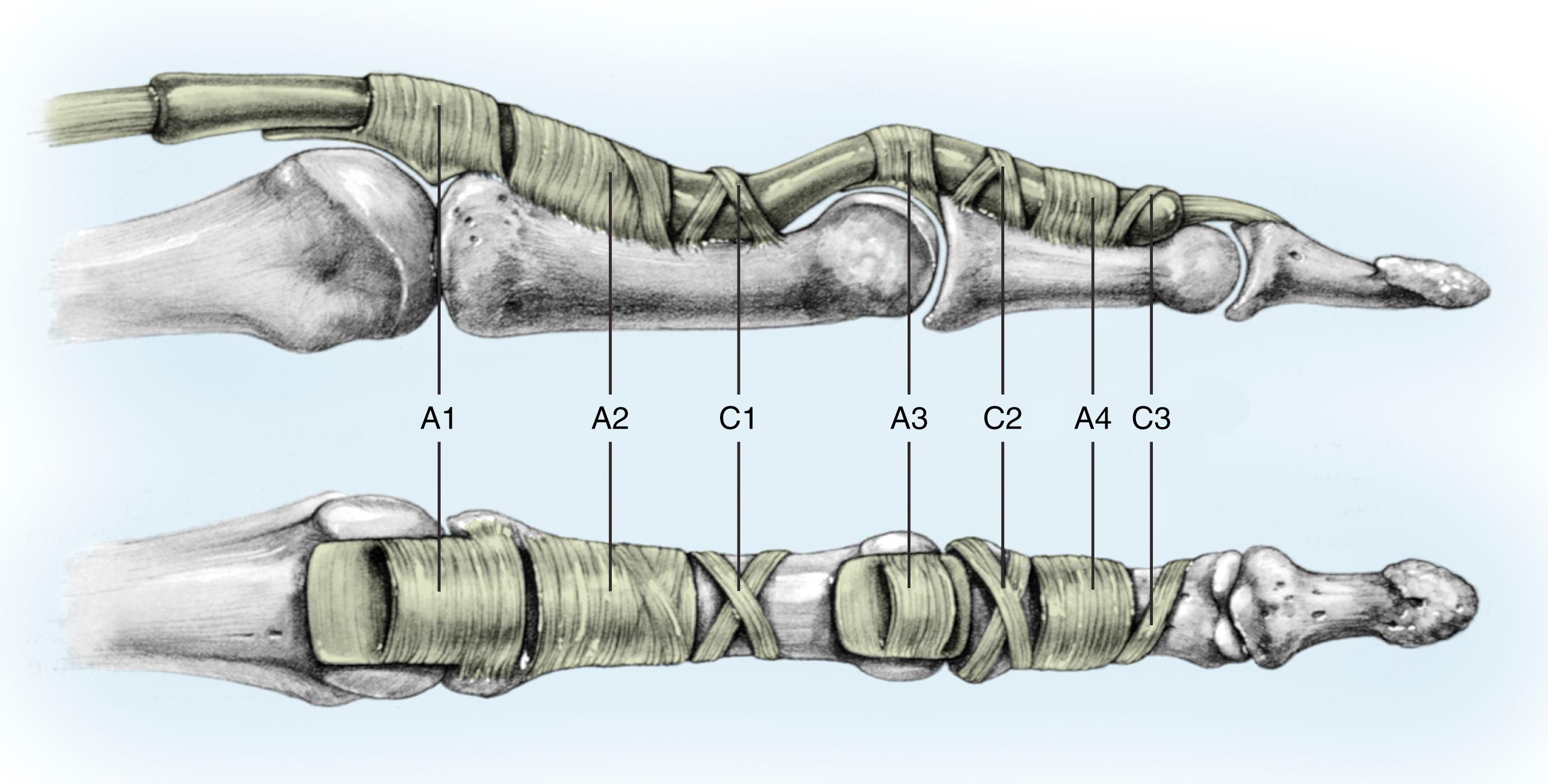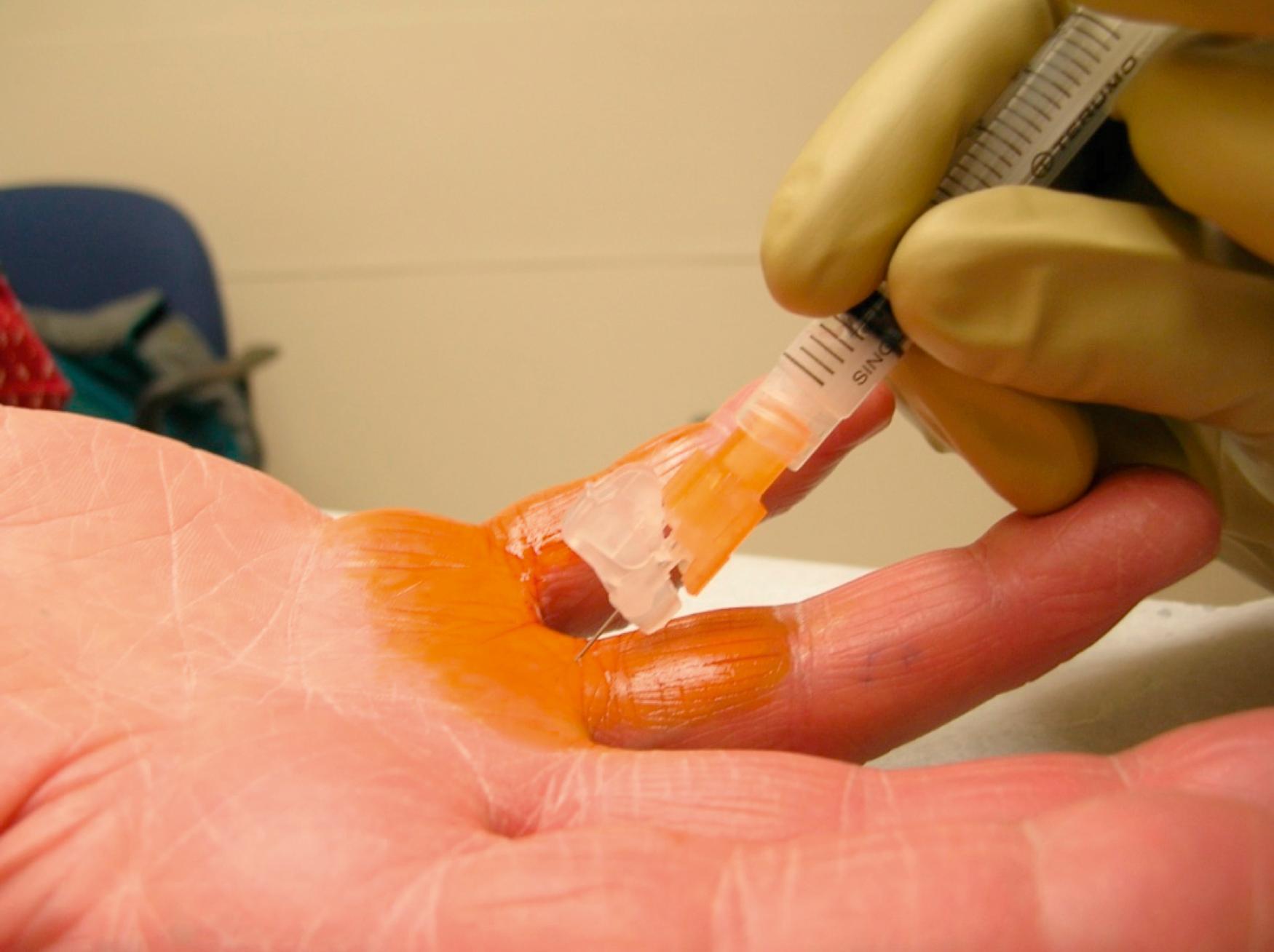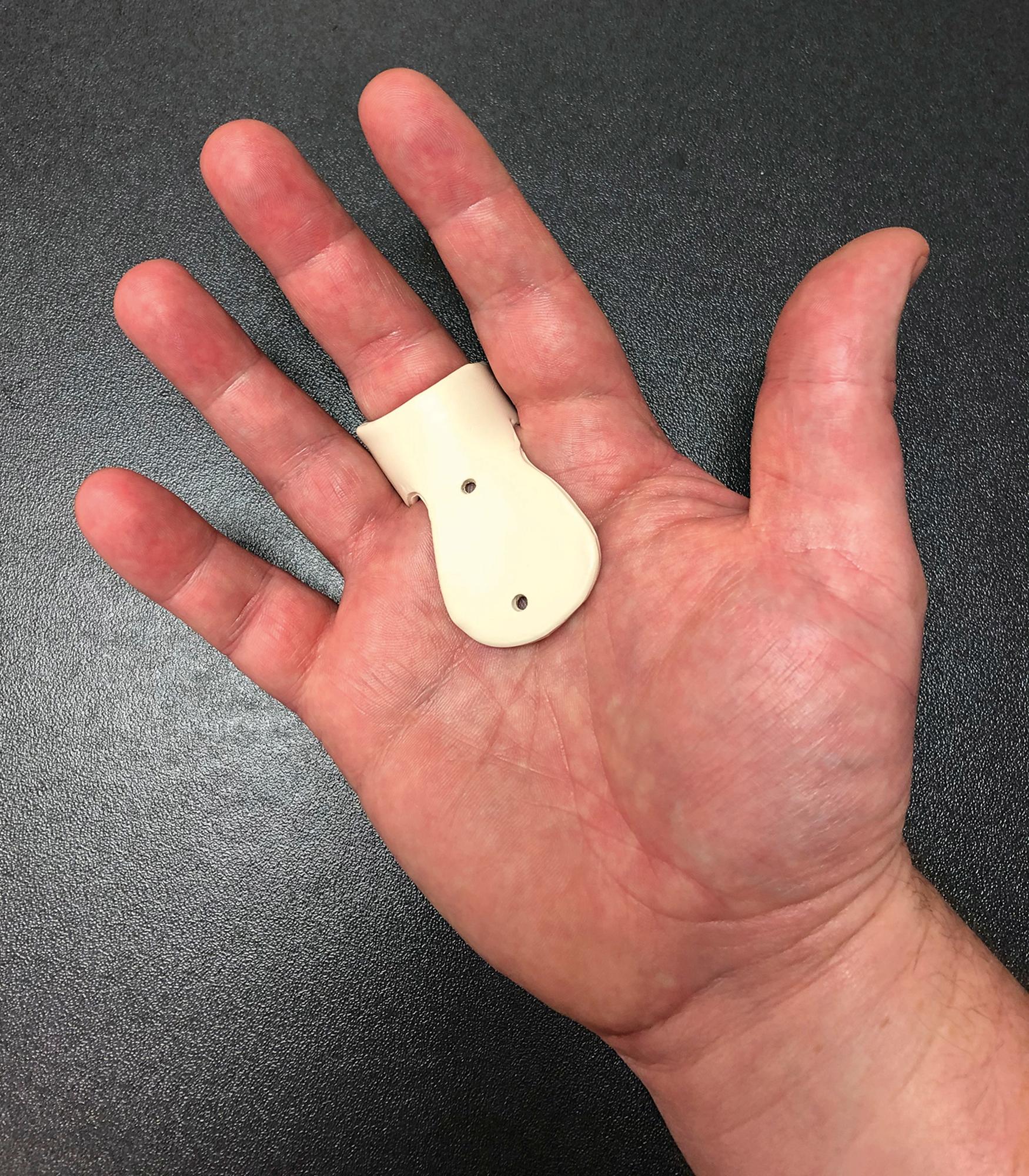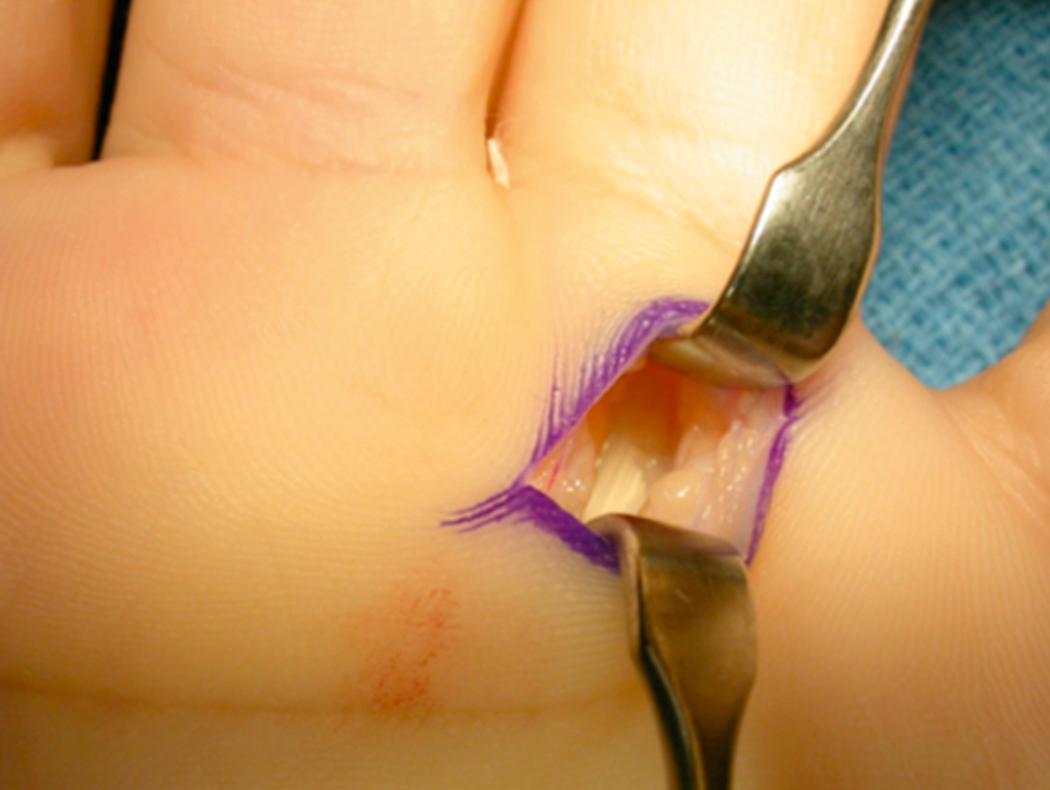Physical Address
304 North Cardinal St.
Dorchester Center, MA 02124
Tendinopathy is defined as painful conditions affecting tendons and includes both inflammatory and degenerative processes. True acute inflammation of a tendon is termed tendinitis, with associated inflammatory cells and proteins. Tendinosis is thought to be a chronic and degenerative tendon lesion with disorganization of collagen bundles, increased tenocyte nuclei, and lipid vacuoles.
Several factors are thought to contribute to tendon pathology. Increased age has been shown to correlate with decreased cellular function in tendons, particularly after the third decade of life. Body weight and nutrition have also been proposed as potential impacts on tendon health. Fluoroquinolone use, while more commonly associated with tendon rupture, has also been implicated in tenosynovitis in the wrist and fingers.
In the hand and wrist, tendinopathies include diseases due to stenosing or narrowing of tendon sheaths, such as de Quervain tenosynovitis or trigger digit, as well as true inflammatory diseases of the tendon, such as proliferative tenosynovitis due to inflammatory arthropathies (e.g., rheumatoid arthritis or gout). Tendon entrapment in fibroosseous canals, such as de Quervain disease in the first dorsal extensor compartment, occurs near joints where tendons bend or turn. Repetitive motion of the tendon can lead to synovial hypertrophy and thickening, along with fibrosis of the retinacular sheath overlying the tendon. In contrast, inflammatory disease of the tendon can occur with deposition of crystals or inflammatory synovitis from autoimmune disease and presents with increased tissue volume, often limiting excursion. This chapter will address these various etiologies and types of tendon disease.
Trigger finger is defined by catching or locking as the patient attempts to flex and extend the finger or thumb, due to volume mismatch between the flexor tendon and flexor sheath. Flexion of the digit, especially in power grip, causes high angular loads at the distal edge of the first annular (A1) pulley ( Fig. 56.1 ). Biologic studies of the tendon and pulley have shown that both undergo pathologic change with the development of triggering. The tendon itself develops a spindle-shaped thickening, often just distal to the edge of the A1 pulley due to the frictional forces with motion. Ultrasound studies of trigger digits have confirmed the pathologic thickening of the tendon. In addition, the A1 pulley that provides excursion to the digit during grip undergoes pathologic change. Specifically, the normal A1 pulley has an inner layer composed of dense connective tissue with thick collagen bundles and an outer layer made up of loose connective tissue with vascular ingrowth. In trigger digits, the A1 pulley develops three layers: an inner thin sheet of irregular connective tissue and small collagen fibers, a middle layer of dense connective tissue and chondrometaplasia, and an outer layer of loose connective tissue similar to normal pulleys. Thus the volume differential in triggering is derived from changes in both the tendon and pulley.

The ring finger is most commonly affected, followed by the thumb. , Small studies have suggested a female prevalence, approximately 2:1, 14 and the most common age at presentation is between 50 and 70 years. Trigger digits are present in approximately 2% of the population but occur in 20% of diabetic patients. Patients typically complain of catching or locking of the proximal interphalangeal (PIP) joint but sometimes simply note pain only over the A1 pulley at the level of the metacarpal head in the volar palm.
A locked trigger finger is differentiated from other diagnoses such as Dupuytren contracture, which presents with a thickened volar cord that prevents extension, or dislocation of the PIP joint, which can be identified on radiographs. Other rare mimickers of trigger digits include a tumor of the tendon or tendon sheath, loose bodies in the metacarpophalangeal (MCP) joint, or true locking of the MCP joint.
The Quinnell classification of triggering severity is the most commonly used ( Table 56.1 ). Others have extended or modified this classification, , but it is still most frequently cited in this form.
| Grade | Definition |
|---|---|
| Grade 1 (pretriggering) | Pain; history of catching, but not demonstrable on physical examination; tenderness over the A1 pulley |
| Grade II (active) | Demonstrable catching, but the patient can actively extend the digit |
| Grade III (passive) | Demonstrable catching and locking requiring passive extension (grade IIIA) or inability to actively flex (grade IIIB) |
| Grade IV (contracture) | Demonstrable locking with a fixed flexion contracture of the PIP joint |
As stated above, female sex and increased age have been shown to be associated with increased prevalence of trigger finger. , Diabetics have been observed to develop trigger finger at a higher rate than the general population, although the etiology is not well understood. A database study in Taiwan evaluated data from 41,781 cases and noted that 1.07% developed trigger digit over 4 years, with risk factors including female sex, age between 50 and 59 years, diabetes, rheumatoid arthritis, and use of hormone antagonist medications.
Corticosteroid injection is the most frequently described nonsurgical treatment of trigger digit. The theory behind injection is that the antiinflammatory effect of corticosteroid decreases synovitis and swelling and thus improves the volume discrepancy between tendon and sheath to allow motion without locking or clicking. Two randomized controlled trials examining the effect of corticosteroid versus placebo showed a success rate of 60% with steroid compared with 15% to 20% with placebo injection. ,
Studies of the effectiveness of corticosteroid injections for trigger fingers have shown resolution rates of approximately 45% after a single injection. , In a study of 366 first-time corticosteroid injections for trigger digits, Wojahn et al. showed that women had a higher chance of resolution of triggering at 56%, compared with men at 35%. The authors also noted that patients experiencing sustained symptomatic relief past 2 years are likely to have permanent resolution of triggering.
In diabetics, corticosteroid injections have been noted to be less effective in resolving trigger digits. Baumgarten and colleagues performed a prospective randomized trial comparing corticosteroid injections in 30 diabetics (35 digits) to 29 nondiabetic patients (29 digits). The cohort with diabetes was randomized into a corticosteroid group (20 digits) and a placebo group (15 digits). The authors noted that 25 of 29 nondiabetic trigger digits resolved compared with 12 of 19 in the diabetic group given corticosteroids and 8 of 15 in the diabetic placebo group. Nephropathy and neuropathy were significantly associated with the need for surgical treatment in the diabetic group. Other studies have confirmed higher rates of surgery in diabetic patients, especially in those who are insulin-dependent.
Another consideration in diabetics undergoing corticosteroid injections is elevation of blood glucose. This was reported by Wang and Hutchinson, who noted a trend of increase in blood glucose over 5 days after injection in 18 patients, with the highest level occurring within 24 hours. Other studies have confirmed this effect. Kim et al. reported that hemoglobin A1C levels greater than 7% correlated with higher and longer blood glucose elevation in diabetic patients. A study of both upper and lower extremity corticosteroid injections noted greater glucose elevations in those receiving lower extremity injections but also noted a similar correlation with hemoglobin A1C and higher glucose levels.
Risks for failure of initial injection include insulin-dependent diabetes, younger age, involvement of other digits prior to presentation, and a history of other upper extremity tendinopathies. In a study of the long-term effectiveness of repeated corticosteroid injections for trigger digit, Dardas et al. evaluated 292 repeat injections in a cohort that included 22% diabetic patients. They showed that second injections were successful in 111 of 285 digits (39%), with 86 receiving a further injection and 108 going on to surgical release. Similarly, 39% (24 of 62) third injections were successful.
Several studies have considered cost of corticosteroid injections compared with immediate surgery. Kerrigan and Stanwix evaluated four strategies, taking into account Medicare reimbursement rates, and reported that management of trigger digit with two corticosteroid injections prior to surgery was the least costly option. Another study of diabetic trigger digits, which included surgical release in the clinic under local anesthesia, concluded that immediate release was the least costly strategy.
The location in which the corticosteroid injectate is placed has also been a matter of debate, as some authors have advocated for subcutaneous injection of steroid compared with injection placed within the flexor tendon sheath. Taras et al studied 95 patients with 107 trigger digits with a prospective study comparing subcutaneous to intrasheath injection, using radiopaque dye and radiographs to identify injectate placement. The authors reported 47% of the intrasheath group has a good response, defined as resolution of triggering and pain, and 70% of the all-subcutaneous injection group had a good response. The authors concluded that injection into the tendon sheath was not necessary to obtain a clinical effect. A more recent prospective study of subcutaneous steroid placement for trigger digit also noted between 74% and 98% of patients with resolution of triggering.
Complications of corticosteroid injections for trigger digit are rare, but they include skin and subcutaneous discoloration and atrophy; pain at the injection site, flare of symptoms; and pulley or tendon rupture. Infection has been reported as well. Corticosteroids have been reported to cause subcutaneous tissue atrophy and hypopigmentation. A study comparing surgery to corticosteroid injection in 165 patients reported that 11 patients experienced a flare of symptoms, or increased pain and swelling following injection, which resolved in a few days.
Pulley and tendon ruptures are more severe complications, rarely reported after steroid injection. Authors have reported multiple pulley ruptures in both the fingers and thumb, requiring reconstruction. Similarly, a case report of flexor digitorum profundus (FDP) rupture after seven corticosteroid injections in 14 months indicates an accumulating risk after multiple injections, but other reports have noted rupture after one or two injections.
The incidence of infection after corticosteroid injection for trigger digit is low, with minimal reports in the literature. Calif et al. reported a mycobacterial infection after steroid injection for a trigger digit, which resolved after repeated radical debridements and antibiotics. Other case reports include an acute horseshoe abscess of the hand after trigger thumb injection, and a case series of eight hand infections after corticosteroid injections included one trigger digit requiring surgery.
When injecting trigger digits, an intrasheath injection technique is preferred. Because of noted pain with high volume injections, a small amount of 0.25 cc of 1% lidocaine combined with 0.75 cc of corticosteroid is used. Water-soluble betamethasone is preferred; however, triamcinolone is a viable option. The 1 cc volume of injectate is drawn up in a 3 cc syringe. A 25-gauge 5/8-inch needle is preferred and injected at the crease at the base of the finger at the distal end of the A1 pulley, with the bevel of the needle directed in a proximal direction ( Fig. 56.2 ). The needle is placed into the tendon sheath and then withdrawn slowly with forward pressure on the syringe. When the needle is within the space between the tendon and sheath, the syringe is able to be deployed. A bandage is placed, and the patient is advised that the effect of injection might not be seen for 2 to 3 days.

The use of splints to limit the motion of affected joints has been suggested to “alter the biomechanics of the tendons” while encouraging maximal gliding. While some studies have reported immobilization of the distal interphalangeal (DIP) and PIP joints, the most common type of trigger digit splint is used to immobilize the MCP joint ( Fig. 56.3 ). Authors have variously described placing the joint at 0 to 15 degrees of MCP flexion with the interphalangeal joints free. , In a prospective study of 55 digits in 38 patients treated with 6 weeks of MCP splinting that placed the joint at 0 degrees, the authors noted 73% resolved or improved, with 14 digits requiring injection or surgery.

In a prospective study of 28 participants treated with thermoplastic ring splints that held the MCP joint in extension, Colbourn et al. reported that 93% felt that triggering was improved, and 54% had resolution of triggering at 10 weeks. Another study of night splinting for 6 weeks, performed in 34 patients, noted that triggering symptoms resolved in 18 of 34 (55%). A systematic review of splinting for trigger digit reported that immobilization of a single joint was associated with improvement in triggering but recommended more stringent randomized trials with use of standardized outcomes measures.
The standard surgical treatment for trigger digit is division of the A1 pulley. Multiple techniques, including open and percutaneous releases, have been described, with variations within these options.
Open visualization and division of the A1 pulley has been a surgical standard in the treatment of trigger digits, with reported good outcomes and minimal complications. Various authors have described different types of skin incisions including transverse, longitudinal, and oblique approaches. Kloeters and colleagues compared three incisions in 30 patients with 32 trigger fingers. The incision was either (1) transverse in the distal palmar crease, (2) transverse and 2 mm distal to the distal palmar crease, or (3) longitudinal over the MCP joint without crossing the distal palmar crease. All patients showed a significant decrease in Disabilities of the Arm, Shoulder, and Hand (DASH) scores at 3 and 12 months postsurgery compared with their baseline value. The authors measured scar volume parameters and speed of DASH decrease and noted the longitudinal incision group had the least scarring and fastest DASH reduction. Thus the longitudinal incision was recommended. A prospective randomized trial of transverse versus longitudinal incisions performed in 67 patients with 1 year follow-up noted no significant differences in the patient-rated scar assessment scores or the DASH scores between groups.
Open surgery has typically been performed using local anesthetic, with or without sedation. The benefit of local alone is that the patient can move the finger actively and confirm no residual triggering. The use of wide awake, local anesthesia with no tourniquet (WALANT) has become popular for A1 pulley release, with demonstrated high patient satisfaction and lowered costs. A study of varying surgical settings and anesthesia types showed that trigger finger release under local anesthesia in a procedure room setting was the most cost-effective option compared with the use of monitored anesthesia care and the operating suite.
The concept of using a needle or scalpel to divide the A1 pulley without an open incision was conceived to allow the procedure to be done in an office setting ( ![]() ). Eastwood et al. described the use of a 21-gauge needle to release the A1 pulley in 35 fingers, noting complete relief of triggering in 32 of 35 (91%) with the remaining intermittent triggering. Another study described use of a No. 11 scalpel blade to release the pulley, performed in 171 patients with 92 having 6-month follow-up. In 128 digits, 120 (94%) achieved successful release with 8 fingers requiring open surgery. There were no digital nerve injuries, bowstringing, or infections noted.
). Eastwood et al. described the use of a 21-gauge needle to release the A1 pulley in 35 fingers, noting complete relief of triggering in 32 of 35 (91%) with the remaining intermittent triggering. Another study described use of a No. 11 scalpel blade to release the pulley, performed in 171 patients with 92 having 6-month follow-up. In 128 digits, 120 (94%) achieved successful release with 8 fingers requiring open surgery. There were no digital nerve injuries, bowstringing, or infections noted.
The outcomes of open surgery have consistently been reported as good to excellent, with a low rate of reoperation. In a large study of 305 trigger digits in 276 patients treated with open A1 pulley release, Lange-Riess et al. reported no recurrence of triggering in 254 digits at 14-year follow-up, with full range of motion in 98%. The authors reported complications in 9 patients, including two superficial infections, one delayed wound healing, and 6 transient digital nerve lesions, all of which resolved without further surgery. A large U.S. insurance database study evaluated 209,634 patients undergoing trigger finger release over a 7-year period, noting the middle and ring fingers as the most commonly treated. The rate of surgical revision was 0.4% at 1 year and 0.6% at 3 years, with risk factors for revision including Dupuytren disease, obesity, smoking, diabetes, and age <65 years.
A comparative study of open and percutaneous trigger thumb releases, performed in 107 patients with 126 trigger thumbs, showed good short- and long-term outcomes at 3 months and 2 years in both groups, with significantly better pain and satisfaction early in the percutaneous group but reversal of this finding at 2 years with better outcomes in the open release group. At 2 years, 19% of digits had pain in the percutaneous group compared with 7% in the open group, and recurrence of triggering was present in 9% of the percutaneous group and 3% of the open group. Another study with a mean of 2.5 years of follow-up compared 70 open releases to 266 percutaneous releases and noted high satisfaction rates for both, averaging 97%, with mild residual pain and stiffness equivalent in both groups.
Open trigger digit release is the preferred technique. The procedure is performed using local anesthesia with or without sedation. A small amount (approximately 2 cc) of 1% lidocaine without epinephrine is injected, avoiding any concerns for finger ischemia. A 1- to 1.5-cm incision is designed in a vertical or oblique direction at the base of the digit for the index through small fingers, in line with the small skin creases ( Fig. 56.4 ). In the thumb, a 1 cm transverse incision at the base of the thumb is preferred.

After skin incision and blunt dissection, the digital neurovascular structures are retracted out of harm’s way. The A1 pulley is sharply divided with a scalpel. The patient is then asked to flex the digit to confirm that no residual triggering occurs. If there is persistent triggering, one slip of the flexor digitorum superficialis (FDS) tendon is excised. The wound is closed with nonabsorbable sutures. A small dressing is applied and secured with cast padding or woven gauze.
Postoperatively, the patient is encouraged to use the finger, avoiding heavy gripping for 2 weeks. The sutures are removed at 10 days. Trigger digit incisions can form a thickened and painful scar. Therefore the patient is instructed to start scar massage once the skin is fully closed. The patient is also told to expect soreness for 4 to 6 weeks after surgery. If the patient has a PIP flexion contracture, early therapy referral can lessen the contracture.
Make an incision that allows access to the entire A1 pulley for release.
Divide the pulley sharply and confirm no residual locking.
Encourage immediate digital motion.
Persistence of triggering has been variably reported but is rare in most series. In a retrospective review of 1598 trigger finger releases over 10 years, Bruijnzeel et al. noted that 10 (0.6%) had persistent postoperative triggering and 4 had recurrence of triggering (0.3%). A large database study noted that the revision rate at 1 year and 3 years was 0.4% and 0.6%, respectively, but no specification of the reason for revision was available.
Persistence of trigger digit after division of the A1 pulley can occur due to enlargement of the flexor tendon with stenosis at the level of the A2 pulley, especially in patients with long-standing trigger digits. Although some authors have advocated combined release of the A1 and A2 pulleys for primary trigger release, most authorities have recommended reduction in the volume of the flexor tendons as the solution for persistent triggering. Seradge and Kleinert described “flexor reduction tenoplasty,” with excision and sutured closure of bulbous enlargement of the FDP tendon. Others have advocated resection of the ulnar slip of the FDS tendon or the entire FDS tendon.
Infection after trigger digit surgery is low in most series. Ng et al. retrospectively evaluated 780 patients with 999 digits and noted 26 patients with infection (3%), which included stitch abscesses as well as superficial and deep infections. Risk factors include shorter time between corticosteroid injection and surgery, tobacco use, use of epinephrine in the local anesthetic, and use of antibiotics. Others have noted similar risk with regard to close timing of corticosteroid injection, with findings of greater incidence of deep infection in those receiving steroid injections within 90 days of surgery.
PIP joint stiffness or contracture is often present upon initial presentation in long-standing cases of trigger digit. This contracture is theorized to occur due to pathologic changes or shortening of the FDS tendon. Preoperative flexion contracture is significantly correlated with higher risk of postoperative contracture, and the patient should be made aware of this risk prior to surgery. Yang et al. described the addition of finger splinting after percutaneous A1 pulley release in a comparative study in 65 patients with PIP contractures and noted significantly improved PIP joint extension in the splinted group. Favre and Kinnen resected the FDS in 39 digits with PIP contracture in combination with A1 pulley release and noted that 72% achieved full extension after surgery.
Become a Clinical Tree membership for Full access and enjoy Unlimited articles
If you are a member. Log in here